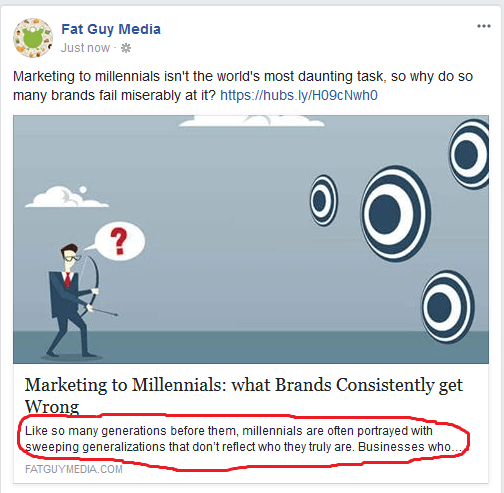Meta descriptions are an aspect of search engine optimization that often go overlooked. Webpages that fail to include them may fall behind in search rankings, even if they’re otherwise well-optimized. But what is a meta description, and how do you write a good one? We’ll explain.
What is a Meta Description?
A meta description is the small snippet of information located underneath the link of a search result. Usually, it briefly describes the contents of the webpage you’ll be taken to after clicking the link.

It’s important to note that meta descriptions are not direct ranking factors on most major search engines. In other words, you won’t be awarded a higher rank if a page has one, and you won’t be penalized if it doesn’t. Still, there are a few reasons why every page should have one.
Why is it Important to have a Meta Description?
It Provides Searchers with Context
So if it won’t directly improve your search ranking, what is a meta description used for? Mainly, to provide searchers with a little bit of context before they click on a webpage.
Google only displays the first 50-60 characters of page titles on search engine results pages (SERPs). The meta description is an opportunity to give searchers more information, helping you bring qualified traffic (people who are actually interested in what your business offers) to your site.
It Drives Organic Search Traffic
A catchy, relevant meta description may be the deciding factor that causes someone to click your page instead of another one on the SERP. After generating enough organic traffic, your page actually will rise through the rankings.
It’s Useful for Facebook
When a page is shared on Facebook, its meta description will automatically populate in the post (see below for a visual example).

For pages without meta descriptions, Facebook will instead pull the first content it finds. This content usually gets cut off because it’s not properly-optimized, providing users with a confusing experience and making your brand look unprofessional.

How to Write a Great Meta Description
Keep it under 160 Characters
Google will cut off your meta description after 160 characters. As a best practice, don’t exceed 155 characters in order to absolutely guarantee your whole meta description will show up.
Make it Exciting
Boring meta descriptions don’t drive traffic. For example, if you’re writing a meta description for a restaurant’s homepage, “This is [insert restaurant name]’s homepage” isn’t going to excite anyone. Include something interesting that will actually give people a reason to click the page.

Include a Keyword
Although it won’t directly boost your ranking, each page’s meta description should include the keyword for which the page is optimized. Presumably, people will be finding that page by typing in the keyword (or something similar), so upon seeing it, they’ll understand that the page contains something they’re looking for.
Don’t use Duplicates
If several pages of your website appear on a SERP and they all have the same meta description, it will be difficult for searchers to differentiate between them. A poor experience like that may frustrate them and cause them not to click on your website.
We hope this blog sufficiently answers the question, “What is a meta description?” Remember, since they’re easy to write and you’ll only benefit from having them, make sure each webpage of your site includes a meta description.


